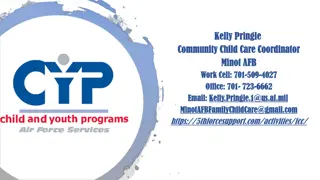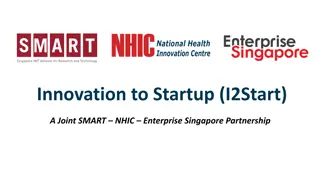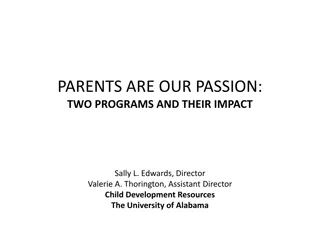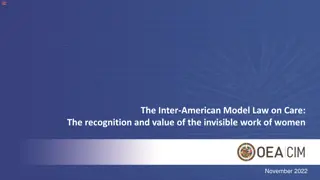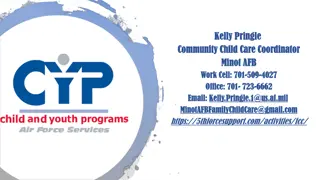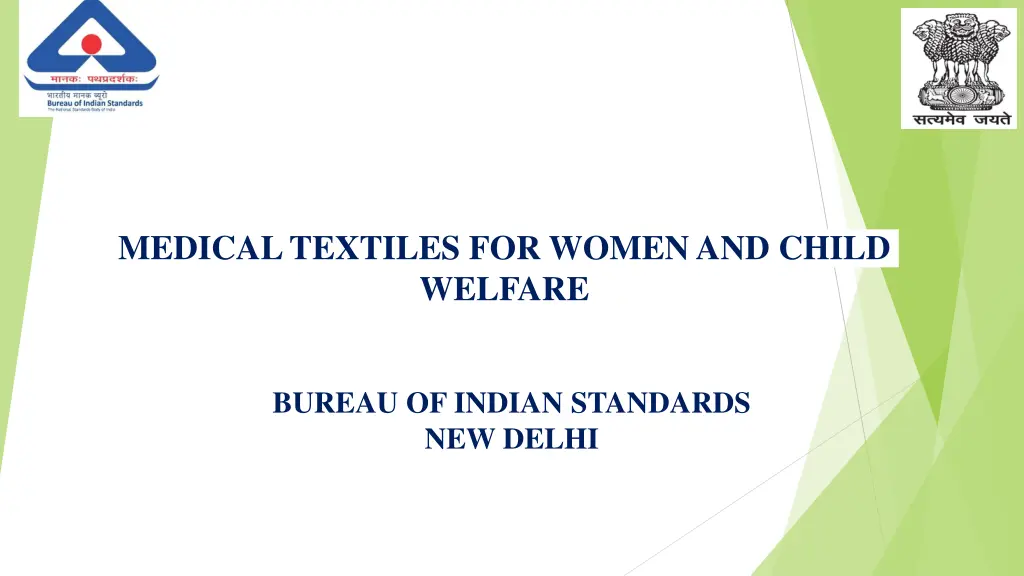
Medical Textiles: Innovations for Women and Child Welfare
Discover the significance of medical textiles in women and child welfare, including applications in incontinence management, menstrual hygiene, and child care. Explore the growth of the medtech sector, global market trends, and the classification of medical textiles. Learn about the standards and standardization efforts in the field, ensuring quality and safety in healthcare and hygiene products.
Download Presentation

Please find below an Image/Link to download the presentation.
The content on the website is provided AS IS for your information and personal use only. It may not be sold, licensed, or shared on other websites without obtaining consent from the author. If you encounter any issues during the download, it is possible that the publisher has removed the file from their server.
You are allowed to download the files provided on this website for personal or commercial use, subject to the condition that they are used lawfully. All files are the property of their respective owners.
The content on the website is provided AS IS for your information and personal use only. It may not be sold, licensed, or shared on other websites without obtaining consent from the author.
E N D
Presentation Transcript
MEDICAL TEXTILES FOR WOMEN AND CHILD WELFARE BUREAU OF INDIAN STANDARDS NEW DELHI
Contents Incontinence Management Menstrual Hygiene Management 02 04 05 01 03 Overview of Medical Textiles Conclusion Child Care and Safety
MEDTECH SECTOR: AN OVERVIEW Out of total Indian textile industry, only 13% contributes to technical textiles, and out of this 13%, the share of Meditech, in technical textiles market is in the range of 6-8%. Global Medical Textiles Market Size is expected to reach around USD 26 billion by 2028 and expected to grow at a CAGR of approx. 4.5 % from 2022-2028 according to a market report. The main volume growth driver in Meditech is the Non-implantable segment which includes nonwoven, surgicals & healthcare/hygiene products. Rising awareness for healthcare practices among the consumers/professional/users Demand for face masks, PPEs, Surgical gowns, has been increased during pandemic. India as a popular destination for medical tourism among patients from countries in south and western Asia, Middle East, Africa Government initiatives for infrastructure and technological advancements, R & D, skill development through Atmanirbhar Bharat, Production Linked Incentive (PLI) scheme and National Technical Textiles Mission, National Health Mission, Ayushman Bharat Yojana etc. Source : Market Research Report/Baseline Survey 2020 on TT
CLASSIFICATION OF MEDICAL TEXTILES 1.HEALTHCARE AND HYGIENE PRODUCTS Healthcare and hygiene textiles materials are mainly used for protection from infections in hospital environment or personnel hygiene. They are used either in the operation theatre or in the hospital wards for hygiene care safety for the staff, doctor and patients or personnel hygiene. e.g. PPE Coverall, Surgical caps, masks, gowns, drapes and shoe covers, disposable bed sheets, Baby Diapers/Adult Diaper, Sanitary napkins, Under pads, Wipes etc. 3. IMPLANTABLE MEDICAL TEXTILE: Implantable medical textiles are partly or totally inserted into the human body. These materials are used in effecting repair to the body whether it is wound closure or replacement surgery or soft tissue implants. e.g. Suture, Vascular grafts , Hernia Mesh, Artificial Heart Valve, Artificial ligament/tendon, Artificial joint/skin/bone etc. 2.NON-IMPLANTABLE MEDICAL TEXTILE: This is used for external application on the body with or without skin contact. This is used for protection against infection, absorption, and exudation of blood & excess fluids, healing applications etc e.g. wound dressing, plaster, bandage, gauge, swabs, compression stocking etc. 4. EXTRA CORPOREAL Extracorporeal mainly deals with artificial organ which are made from specialized textile implants that can function as a part of human body for blood purification apheresis, hemodialysis, hemofilteration, plasma pheresisn etc. e.g. Artificial kidney, Artificial lever, Artificial valves and Artificial Lungs etc.
STANDARDIZATION OF MEDTECH Standardization in the field of Medical Textiles has been undertaken by TECHNICAL TEXTILES FOR MEDTECH APPLICATION SECTIONAL COMMITTEE, TXD 36 under Textiles Division Council with mandate to formulate Indian Standards for terminology, testing and specifications for technical textiles for medtech applications such as healthcare and hygiene textile products, implantable and non-implantable and extra corporeal textile products. Number of standards formulated: 76 (Product -64, Method of test -12) Number of standards under development: 04
IMPORTANT PRODUCT OF MEDICAL TEXTILES SURGICAL FACE MASK COVERALL BEDSHEET/ PILLOW COVER BABY DIAPER SANITARY NAPKIN 6
IMPORTANCE OF MENSTRUAL HYGIENE MANAGEMENT Menstrual Hygiene Management (MHM) is critically important for the well-being, dignity, and health of individuals who menstruate. Benefits Health and Hygiene: Prevents infections, ensures comfort, and supports mental well-being. Dignity and Empowerment: Maintains dignity, empowers women and girls, and promotes gender equality. Education and Productivity: Improves school attendance and workplace productivity. Socio-economic Impact: Reduces stigma, promotes inclusivity, and contributes to economic development. Environmental Sustainability: Encourages sustainable menstrual products and proper waste management. Public Awareness and Policy: Prioritizes MHM through government policies, advocacy, and community awareness
Important standards for menstrual hygiene management IS 5405 : 2019 Disposable Sanitary Napkin A sanitary napkin is an absorbent material used to absorb fluid discharged during menstruation. Hygiene- related practices of women during menstruation are of considerable importance, as they have a health impact in terms of increased vulnerability to reproductive tract infections (RTI). Menstrual hygiene is vital for the empowerment and well-being of women and girls worldwide. IS 5405 : 2019 specifies the requirements that ensure the sanitary napkin is assembled in a proper fit, is able to withstand pressure after an absorption test to ensure no leakage and is free from lumps, oil spots, dirt or foreign material. To ensure hygiene and safety, testing of bacterial and fungal bioburdens and testing for common skin pathogens has also been incorporated in the standard. To ensure that the raw materials used for manufacturing the final product are safe for the user, a biocompatibility evaluation covering cytotoxicity, irritation and skin sensitisation tests is specified in the Optional requirements of biodegradability and compostability, aiming to mitigate solid waste generation
Important standards for menstrual hygiene management IS 17514 : 2021 Reusable Sanitary Pad / Sanitary Napkin / Period Panties Specification IS 17514 covers the requirements for reusable (multiple use) sanitary pad/sanitary napkin/period panties for external use. The reusable sanitary pad/sanitary napkin/period panties generally consist of following major components: a) cover or the top sheet- which comes in contact with skin of wearer b) absorbent core - middle layer(s) consist of filler materials c) bottom layer- made of suitable material(s) that prevents the leakage when used. This standard stipulates the requirements of Ph, absorption capacity, phthalate requirement, hygienic requirements like total microbial count, bacterial and fungal bioburden and biocompatibility which includes cytotoxicity, skin irritation and sensitization etc. As these are washable napkins, requirement of colorfastness, washing instruction, dimensional stability and fastening mechanism have been specified. The standards on disposable and reusable sanitary pad are also being referred in draft National Menstrual Hygiene Policy.
Important standards for menstrual hygiene management IS 17454:2020 - Guidelines and General Requirement of Sanitary Napkin Vending Machine Sanitary napkin vending machine is a self-service vending machine used for dispensing sanitary napkins against acceptance of coins, paper currency, token card, digital mode, biometric system, radio-frequency identification (RFID) or through mechanical operation. It can be easily installed at different work places like schools, colleges, community centers and public places like airports, hospitals, shopping malls, railway stations, and bus stops etc. Standard establishes guidelines for the design, construction, and operation of sanitary napkin vending machines to ensure they are safe, reliable, and accessible in public spaces. Important Requirement Resistance to Temperature and Humidity Changes Vending Mechanism Cyclic Calibration TestBattery/Power Back-up
IMPORTANCE OF CHILD CARE PRODUCTS Child care products such as baby diapers and wipes are indispensable in ensuring the well-being and comfort of infants while significantly easing the responsibilities of caregivers. Benefits Hygiene Maintenance : Keeps babies dry, preventing prolonged exposure to moisture that can cause rashes or infections.. Safety and Health : Prevent skin irritation and reduce the risk of conditions like diaper dermatitis. Convenience for Parents/Caregivers: Save time and effort for parents and caregivers by offering easy and efficient hygiene solutions. Support in Development : Comfortable and well-fitted diapers allow babies to move freely, aiding their physical development and mobility without discomfort
Important standards for Child Care Products IS 17509 : 2021 Disposable Baby Diaper Baby diapers are personal hygiene products that allows the baby to defecate or urinate without the use of a toilet, by absorbing or containing waste products to prevent soiling of outer clothing or the external environment This standard specifies quality requirements such as pH value, rate of absorption, rewet under load, minimum absorption capacity, hygiene testing requirement, biocompatibility evaluation, phthalate test, and optional requirement for biodegradability and compostability, etc. The above performance parameters for baby diapers are crucial to ensure safety, quality, and performance. It ensures that diapers are made from non-toxic materials to protect babies' sensitive skin, provide adequate absorbency to prevent discomfort and rashes, and fit properly to avoid leaks.
Important standards for Child Care Products IS 17509 : 2021 Disposable Baby Diaper
Important standards for Child Care Products IS 17787 : 2021, Nonwoven Wipes Nonwovens are structures of textile materials, such as fibres, continuous filaments, or chopped yarns of any nature or origin, that have been formed into webs by any means, and bonded together by chemical, mechanical, heat or solvent treatment etc., excluding the interlacing of yarns as in woven fabric, knitted fabric, laces, braided fabric or tufted fabric. IS 17787: 2021 defines the minimum performance requirements for single-use, dry or wet, nonwoven wipes used for various hygiene purposes, excluding wipes impregnated with alcohol or claiming germicidal properties. The standard aims to ensure product consistency, safety, and efficacy. It doesn't cover the chemical composition of cleaning agents, moisturizers, fragrances or preservatives used in the wipes, but it mandates compliance with permissible limits set by the Food and Drugs Authority of India or other relevant regulatory bodies.
Important standards for Child Care Products IS 17787 : 2021, Nonwoven Wipes Performance Standards: Consumers expect wipes to meet certain performance standards. The standard defines requirements for pH levels, microbial limits, and optional antibacterial activity, ensuring the wipes are fit for their intended purpose. Accurate Product Information: The standard mandates detailed labelling on each pack, including product name, dimensions, quantity, manufacturer details, date of manufacture, intended use, country of origin, ingredients, usage instructions, disposal instructions, shelf life and any antibacterial claims. Compliance with Regulations: Consumers need assurance that the products comply with relevant safety and quality regulations. The standard explicitly states that wipes may be certified with the Standard Mark under the Bureau of Indian Standards Act, 2016, providing a mark of quality and compliance.
Important standards for Child Care Products IS 17788 : 2021, NONWOVEN FABRIC FOR WIPES IS 17788 specifies minimum performance requirements for non-woven fabric for single use dry or wet wipes for baby care and personal hygiene. Construction requirement Fibre identification Weight per sq. mm. Performance Parameter Sinking time - How quickly the fabric absorbs liquid, which is essential for wipes that need to efficiently pick up dirt, oil, or moisture Water holding capacity - crucial for wipes that need to hold moisture for effective use Breaking strength (dry/wet) - Durability, reliability, and usability of the product pH -Wipes come into direct contact with the skin, making it essential that their pH aligns with the skin's natural pH
IMPORTANCE OF INCONTINENACE MANAGEMENT PRODUCTS Incontinence medical textile products, such as adult incontinence diapers and underpads, play a vital role in managing incontinence and improving the quality of life for individuals affected by urinary or fecal incontinence. Benefits Health and Hygiene: Prevents skin irritation, rashes, and infections; promotes cleanliness. Comfort and Dignity: Provides comfort, absorbs moisture, and helps maintain dignity Improved Mobility and Independence: Supports independence and allows an active lifestyle. Quality of Life: Boosts emotional well-being, confidence, and reduces caregiver burden. Environmental and Technological Advancements: Features advanced materials for better absorption and eco- friendly options. Social Inclusion: Enables participation in social activities without fear of leaks or embarrassment
Important standards for Incontinence Management Products IS 17508: 2020, Disposable Adult Incontinence Diapers This standard specifies provides guidelines and specifications for disposable adult incontinence diapers, which are designed to manage urinary incontinence in adults. These diapers are commonly used in healthcare settings, particularly for elderly patients, individuals with physical disabilities, or those recovering from surgery. The standard ensures that the products meet safety, performance, and comfort criteria, offering a high-quality solution for the management of incontinence. To meet these quality expectations, the standard provides detailed specifications and testing requirements for each component of the diaper, including the top cover, absorbent core, and protective back sheet. It outlines the necessary properties such as minimum absorption rates, rewet under load, and pH range, ensuring performance and comfort. It also mandates hygiene testing, biocompatibility evaluation, and optional biodegradability standards to ensure consumer safety. Guidelines on Good Manufacturing Practices (GMP) are included to maintain product cleanliness.
Important standards for Incontinence Management Products IS 17786 : 2022, Underpad This standard specifies the requirements and testing methods for underpads (also known as bed pads, absorbent underpads, or incontinence pads) primarily used in healthcare, personal care, and hygiene applications. Underpads are essential for individuals who require protection against incontinence, wound care, or post-surgery recovery. Absorbency Capacity: The underpad must be able to absorb a specified amount of liquid without leakage, maintaining comfort and hygiene for the user. Fluid Retention (7.5 times of initial weight): The underpad should retain absorbed liquid without allowing it to escape, ensuring that the surrounding environment (e.g., bed, chair) remains dry. Size and Fit: The underpad must be available in various sizes to ensure proper coverage and fit for different user needs. Non-Irritant: The materials used must not cause irritation to the skin, making it safe for prolonged use.
STANDARDS UNDER QCO Section 16 of BIS Act - Authorizes the Central Govt to issue Quality Control Orders to make BIS certification mandatory for protection of human health, animal or plant health, safety of environment, prevention of unfair trade practices, national security etc. Initially a list of 54 product standards published on Medical Textiles was considered by Ministry of Textiles for Quality Control Orders, out of these 48 medical textiles products are covered under ambit of Central Drugs Standard Control Organization (CDSCO). Ministry of Textiles, Govt. of India issued Quality Control Orders dated 27 September 2023 on the following 6 standards for mandatory BIS Certification from 01 January 2025 Sl No. IS No. Product Title 1 IS 5405:2019 Sanitary napkins Specification (second revision) 2 IS 17349:2020 Medical textiles Shoe covers Specification 3 IS 17354:2020 Medical textiles Dental bib/Napkins Specification 4 IS 17509:2021 Disposable Baby Diaper Specification 5 IS 17514:2021 Reusable Sanitary Pad / Sanitary Napkin / Period Panties Specification 6 IS 17630:2021 Medical Textiles Bedsheet and Pillow Cover Specification
Conclusion Key Takeaways 01 Challenges and Solutions Indian Standards on 02 Medical textiles products like sanitary pad, vending Future Directions Challenges such as high 03 machine, diaper and initial costs, eco-friendly wipes ensure quality products and lack of Future efforts should focus on products for menstrual awareness can be addressed developing cost-effective, hygiene management, biodegradable medical textiles and through education, awareness, expanding their use in diverse filed of child care and subsidies, and demonstration healthcare and hygiene management incontinence management projects to showcase their to maximize their potential. benefits.
Summary of Key Points Future Outlook The future of medical textiles is Importance of Medical Textiles promising, with advancements in The importance of medical smart technologies and biodegradable textiles lies in their ability to materials paving the way for more Recap of Benefits address key challenges, from efficient and eco-friendly hygiene and Medical textiles provide accessibility, affordability, incontinence management practices. comfort, leak prevention, and awareness and environmental 3 sustainability. safety for menstrual hygiene management, child care, and 2 incontinence solutions 1







